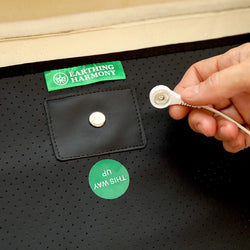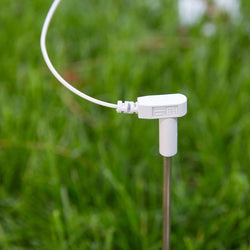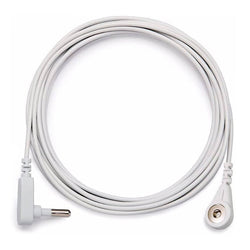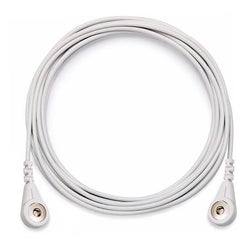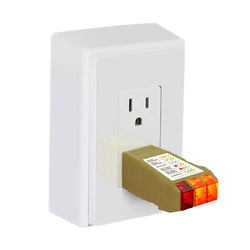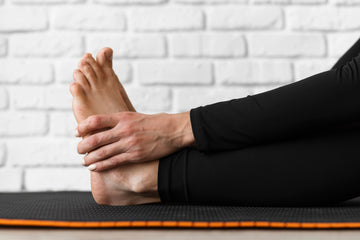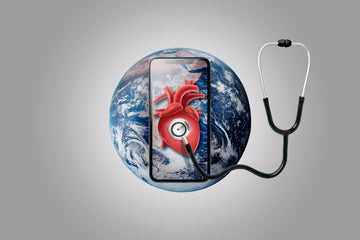Jet lag at the end of your entire trip is an all-too-familiar struggle for modern travellers navigating today's fast-paced, globalized world. Whether you're crossing multiple time zones for work or pleasure, the disorienting effects of long-haul flights can linger for days.
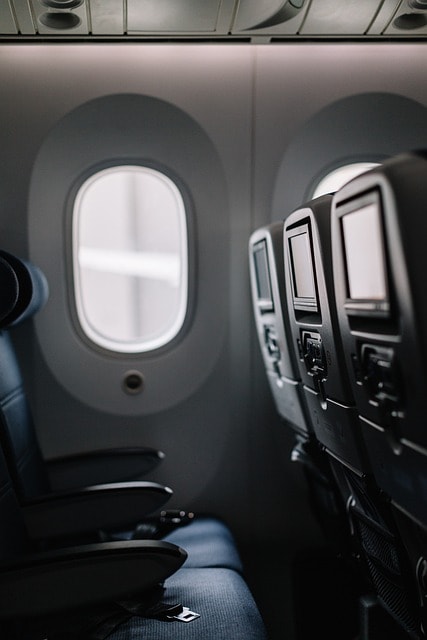
Despite the many conventional solutions available, jet lag continues to disrupt sleep, mood, and overall performance—leaving even seasoned travellers feeling drained and unbalanced.
This article introduces grounding (earthing) as a science-backed, natural remedy for relieving jet lag symptoms.
You’ll learn how grounding helps regulate circadian rhythms, improve sleep quality, and reduce the inflammation and oxidative stress caused by air travel. Discover how connecting with the Earth’s surface can support your physical and mental health and help you bounce back after crossing multiple time zones.
What Is Jet Lag and Why Does It Happen?
Definition and Symptoms
Jet lag is a temporary sleep disorder that occurs when your body’s internal clock (also known as your biological clock or circadian rhythm) becomes out of sync with a new time zone.
Symptoms of jet lag typically manifest in several noticeable ways. One of the most common is persistent fatigue and daytime sleepiness, which makes it difficult to function at your best. Another is insomnia, or the inability to fall or stay asleep at night, which compounds the tiredness. Cognitive symptoms such as brain fog, poor memory, and trouble concentrating are also prevalent. Additionally, many travelers report digestive disturbances, such as bloating, constipation, or irregular bowel movements, after a long flight.
Causes of Jet Lag
The root cause of jet lag lies in the disruption of your circadian rhythm, which is your body’s natural 24-hour sleep-wake cycle. When you travel across several time zones, your internal clock no longer aligns with the external local time at your destination. This dissonance confuses your inner clockwork, leaving you feeling out of sync.

Moreover, long flights introduce other stressors to the body. One of them is cabin pressure and oxygen deprivation, which can restrict blood flow and leave you feeling lethargic. Another is the exposure to electromagnetic fields (EMFs) from onboard electronics and in-flight Wi-Fi, which may interfere with your natural circadian rhythm and overall well-being. Lastly, the dry air in airplane cabins causes dehydration, and all the stress associated with travel—tight schedules, crowded airports, and unfamiliar environments—intensifies these symptoms.
Understanding Grounding: The Science Behind Earthing
What Is Grounding?
Grounding, or earthing, is the practice of establishing direct contact between your body and the Earth’s surface. This is often done by walking barefoot on natural elements like grass, soil, or wet sand. The idea is that the Earth’s surface electric potential transfers free electrons into the human body, helping to neutralize harmful free radicals and restore bioelectrical balance.
How Grounding Works
Grounding helps the body in several key ways. First, it helps balance cortisol levels, which are often elevated due to the stress of air travel. Cortisol is the primary stress hormone, and grounding appears to normalize its production, which is essential for sleep and recovery. Second, grounding helps sync biological rhythms with the Earth’s natural frequencies, specifically the Schumann resonance, which may assist in aligning your circadian rhythm with the new local time.
It also supports physiological functions such as improving circulation, reducing stress, and supporting immune function—all of which are beneficial after traveling across multiple time zones.
Scientific Studies Supporting Grounding
Research into grounding has revealed numerous health benefits that directly relate to jet lag recovery. Multiple studies show that grounding improves sleep quality and supports a regular sleep schedule. Others show its ability to reduce inflammation and oxidative stress, which is often elevated during and after long haul flights.

How Grounding Helps Relieve Jet Lag
1. Resetting the Body’s Internal Clock
One of the most powerful effects of grounding is its ability to reset the body’s internal clock. By aligning your body’s rhythms with the Earth’s natural electromagnetic field, grounding helps regulate your circadian cycle, allowing you to adapt more quickly to a new time zone. This makes grounding an especially effective method for anyone seeking to cure jet lag without pharmaceutical interventions.
2. Improving Sleep Quality and Duration
Jet lag often causes disrupted sleep, which further weakens your ability to recover. Grounding has been shown to reduce nighttime spikes in cortisol levels, and promote natural melatonin production—key for falling asleep and staying asleep. Travelers who sleep grounded often experience deeper, more restful sleep, especially during the first night at a foreign destination.
3. Reducing Inflammation and Oxidative Stress
Flying at high altitudes can increase inflammation and oxidative stress in the body. These factors contribute significantly to jet lag symptoms like muscle stiffness, headaches, and brain fog. Grounding has been shown to reduce levels of pro-inflammatory cytokines, thereby possibly reducing inflammation and making it easier for the body to recover from a long flight.
4. Neutralizing EMF Exposure
Modern air travel involves high levels of EMF exposure from electronics, airport scanners, and Wi-Fi signals. Grounding can help counteract jet lag by acting as a natural EMF shield. It enables the Earth’s surface electric potential to discharge excess energy, restoring the body's bioelectrical equilibrium.
✅ Actionable Tip: For best results, try to ground within 30 minutes of landing. This timing maximizes your body's ability to reset and sync with the new environment.
Practical Tips: How to Ground While Traveling
Before you even step on the plane, you can begin the grounding process. Spend some time outdoors the day before your flight, ideally walking barefoot on a lovely green lawn, soil, or wet sand. This primes your body for balance and helps reduce travel-related stress. At night, consider sleeping on a grounding mat or using a grounding sheet to stay connected to the Earth’s surface while indoors.
During your flight, grounding becomes more difficult, but there are still ways to mitigate the effects of EMFs and inactivity. Wearing anti-static bands or grounding patches (if allowed on your airline) can help. Minimizing screen time also reduces EMF exposure and helps preserve your natural circadian rhythm.
Once you arrive at your destination, prioritize outdoor time. Take your shoes off and walk barefoot on green spaces, wet sand, or even a patch of dirt in a park. Engage in a grounding meditation by sitting or standing barefoot while focusing on your breath and the connection with Mother Earth. In your hotel room, use a portable grounding mat or patches to sleep grounded and support your regular sleep schedule.
🧳 Pro Tip: Always pack a lightweight, travel-friendly Earthing Harmony grounding mat in your carry-on. That way, you’ll have access to grounding tools wherever your journey takes you.
Recommended Grounding Products for Jet Lag Recovery
One of the best tools to fight jet lag is a grounding mat. These can be used while seated at the airport, on long layovers, or in your hotel room. They offer a simple way to stay connected to the Earth’s surface even indoors.
Grounding sheets are another excellent choice. They’re designed to be slept on, making them ideal for improving rest while traveling and helping you sleep grounded through the night.

Conclusion: Why Grounding Is a Must for Every Traveler
Grounding may very well be one of the most important health discoveries for modern travelers. By reconnecting with Mother Earth, we allow our bodies to discharge the stresses of travel, reset our circadian rhythms, and support our mental health and energy levels.
With a growing body of science to back it up, grounding is a powerful, natural way to combat the challenges of jet lag, especially following long haul flights through multiple time zones. From improving sleep to reducing inflammation, the benefits are undeniable.
Ready to beat jet lag naturally? Shop our grounding travel essentials now and feel the difference on your next trip.
FAQs About Grounding and Jet Lag
Does grounding really help with jet lag?
Yes! Studies show grounding reduces cortisol, aligns circadian rhythms, and improves sleep—key factors in overcoming jet lag.
How soon should I ground after landing?
As soon as possible—ideally within 30 minutes—for the best results in helping your body clock reset.
Can I ground in any environment or climate?
Yes! Wet sand, grass, green spaces, and even soil in colder climates work well.
Are grounding products safe to travel with on flights?
Absolutely. Our portable grounding mats and patches are designed for safe, easy travel.
What’s the difference between grounding indoors vs. outdoors?
Outdoors, you connect directly with Mother Earth’s electrons. Indoors, you use grounding tools to tap into the Earth’s surface electric potential, which can be equally beneficial when direct contact isn’t an option.
Does the Earth’s surface supposedly provide healing energy?
Yes. The Earth’s surface emits electrons that interact with the human body’s bioelectrical systems, offering many travellers grounding effects that feel so healing.
Does a long flight basically reset your body clock?
A long flight basically resets your internal timing by throwing off your natural cues for light and sleep. Grounding can help help reset those rhythms effectively.
When does the jet lag start leaving your system?
Jet lag leaving depends on your ability to adapt to a new time zone. Grounding, light exposure, and hydration can accelerate recovery.
Should I avoid alcohol while flying?
Yes, it’s best to avoid alcohol during and after flights. It dehydrates the body and interferes with sleep, worsening daytime fatigue and jet lag symptoms.
What role does time difference play in jet lag?
Crossing even a minor time difference can impact your circadian rhythm, especially when it affects natural light exposure. Grounding can ease the transition.
Why are most shoes poor conductors for grounding?
Most shoes use materials like synthetic rubber and plastic soles, which are poor conductors of Earth’s energy. That’s why walking barefoot or Earthing Harmony footwear is encouraged.
Does grounding help reduce daytime fatigue?
Absolutely. Reconnecting with Earth’s energy can alleviate daytime fatigue by resetting your sleep-wake cycle and enhancing alertness.
What are some other benefits of grounding?
Other benefits include reduced stress, improved immune function, and enhanced mood—all valuable for those recovering from jet lag.
Is grounding a replacement for all the treatments used for jet lag?
While grounding is powerful, it works best when used in combination with all the treatments like hydration, rest, and light exposure.
Should I take melatonin supplements if I’m grounding?
You may choose to use melatonin supplements as a complementary strategy, especially if you’re struggling to fall asleep after a flight.
Why is it important to stay hydrated during air travel?
It’s critical to stay hydrated to combat the dry cabin air and help your body adjust to altitude and time changes.
Can grounding help improve alertness after landing?
Yes. Grounding after your flight can improve alertness and cognitive clarity, helping you be more present in your new destination.



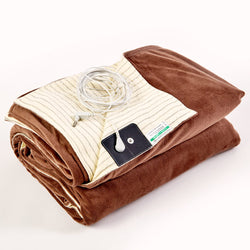


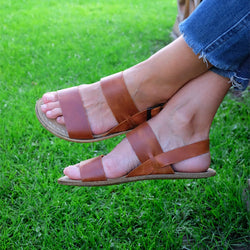
 Shoes
Shoes
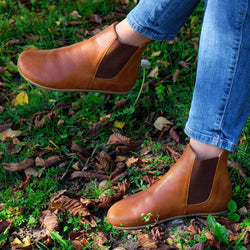 Boots
Boots
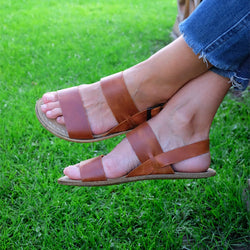 Sandals
Sandals
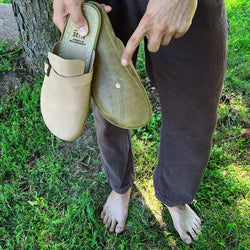
 Shoes
Shoes
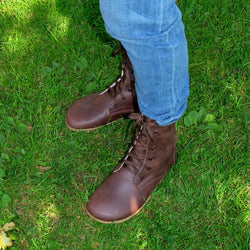 Boots
Boots
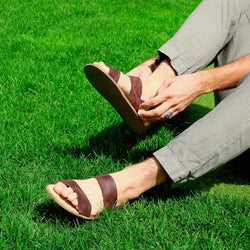 Sandals
Sandals

